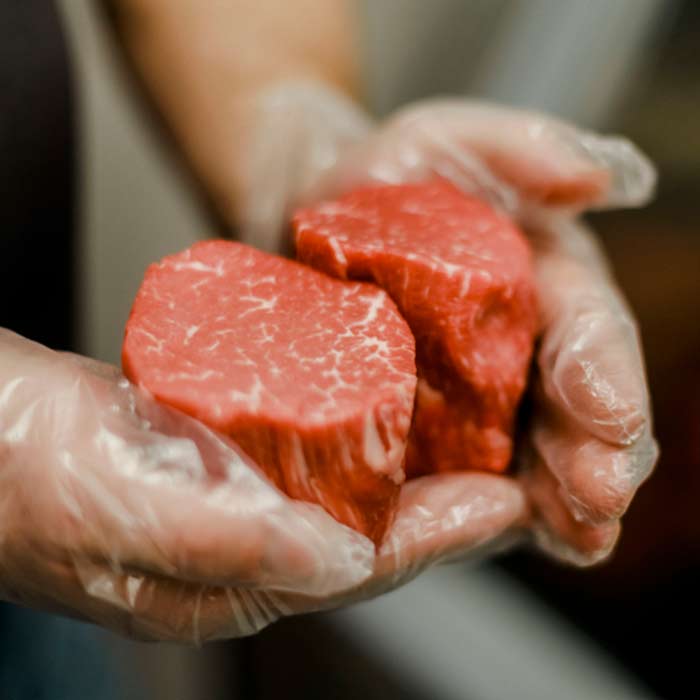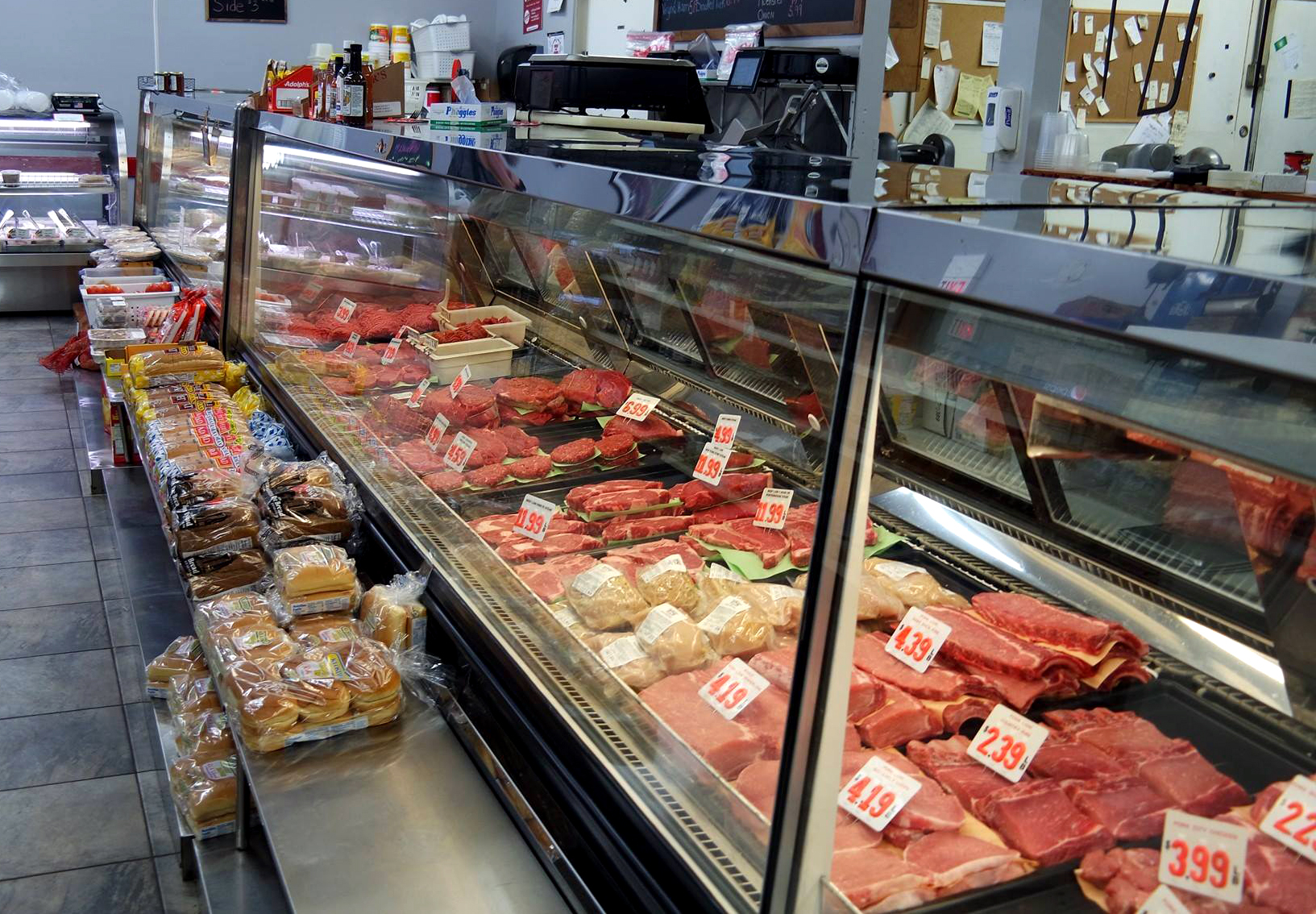Exactly How to Pick the Perfect Cut of Meat From a Trusted Meat Market
Selecting the optimal cut of meat from a relied on meat market calls for a thoughtful method that balances top quality, cooking objective, and spending plan. Understanding the different kinds of meat and their corresponding cuts is necessary, as is engaging with your butcher to get understandings right into sourcing and preparation.
Understanding Meat Cuts


For circumstances, the tenderloin is valued for its buttery texture and marginal connective tissue, making it ideal for fast cooking methods such as barbecuing or pan-searing. In contrast, harder cuts like the brisket or shank take advantage of slow-moving cooking strategies to damage down collagen, yielding abundant and tasty outcomes.
Additionally, the fat web content of a cut plays a vital duty in flavor account and moisture retention throughout cooking. Cuts with higher fat web content, such as ribeye, provide an even more robust taste, while leaner choices, like sirloin, might need mindful preparation to prevent dry skin (bagley meat market edwardsville il). Understanding these subtleties permits for notified selections that elevate culinary productions, ensuring that each recipe showcases the finest qualities of the selected meat
Aspects to Consider
When choosing the excellent cut of meat, several important elements enter play that can considerably affect the last dish. Think about the type of meat you prefer-- beef, pork, lamb, or chicken-- as each deals special tastes and appearances. The details cut within that category is just as important; as an example, ribeye delivers rich marbling, while tenderloin offers a lean, buttery texture.
One more aspect is the food preparation technique you prepare to utilize. Cuts appropriate for barbecuing, such as T-bones or sirloins, vary from those far better fit for sluggish food preparation, like chuck roasts or shanks. Furthermore, freshness is critical; always pick meat with a dynamic color and firm structure, signifying high quality and proper handling.
Premium cuts might use outstanding taste, yet there are likewise cost-effective choices that, when prepared correctly, can produce tasty outcomes. Balancing these factors will aid you select the perfect cut for your cooking requirements.
Questions to Ask Your Butcher
A butcher's competence can be vital when selecting the optimal cut of meat for your culinary undertakings (bagley meat market edwardsville il). To maximize this source, consider asking in-depth questions that can assist your choices. Beginning by asking regarding the source of the meat. Recognizing where it originates from can offer insights right into its high quality and flavor profile.
Following, ask concerning the different cuts offered for the sort of meat you choose. A well-informed butcher will certainly clarify the nuances of each cut, helping you select one that matches your food preparation approach and wanted outcome. Don't think twice to ask about the very best cooking methods for a details cut; butchers frequently have ideas that can improve your recipe.
It's additionally sensible to ask about the meat's freshness. Ask about the shipment routine and exactly how commonly the meat is replenished. This will certainly provide you confidence in the quality of what you are buying. Ask for suggestions based on your individual preference preferences. A great butcher will certainly be anxious to share their proficiency and suggest cuts that will certainly delight your read what he said taste buds. Engaging your butcher with these questions can substantially enhance your meat choice experience.
Identifying Top Quality Meat

Texture is an additional important variable; top quality meat ought to really feel firm and slightly springy to the touch. Avoid any kind of cuts that really feel slimy or exceedingly dry, as these can indicate perishing or incorrect storage space. In addition, scent plays an important duty; fresh meat ought to have a clean, neutral scent, while any kind of off-putting or sour smells are red flags.
Finally, consider the resource. Purchasing from a respectable meat market, where the meat's origin is known, can make certain higher high quality requirements. By focusing on these indications-- color, marbling, texture, smell, and resource-- you can with confidence pick cuts that will certainly boost your food preparation and eating experience.
Food Preparation Techniques for Each Cut
Choosing the ideal food preparation approach is paramount for making best use of the taste and inflammation of each cut of meat. Different cuts have special qualities that determine the most appropriate cooking strategies.
For tender cuts, such as filet mignon or ribeye, dry warm techniques like grilling, broiling, or pan-searing are excellent. These techniques boost the all-natural tastes while guaranteeing a juicy, succulent structure. On the other hand, harder cuts, such as chuck Get More Information or brisket, take advantage of moist warm methods, including braising or slow-moving food preparation. These strategies help damage down connective cells, leading to a tender, tasty dish.
Pork chops and chicken breasts are functional and can be cooked making use of both dry and damp approaches. While grilling or roasting can generate tasty results, poaching or sautéing can preserve moisture and tenderness. For lamb, methods like roasting or braising are suggested, as they match the meat's durable flavor.

Conclusion
Finally, selecting the optimal cut of meat from a reliable meat market necessitates an extensive understanding of meat cuts and consideration of different elements, consisting of resource, high quality, and cooking techniques. Engaging with the butcher with targeted inquiries can yield read this important insights and suggestions customized to details culinary requirements. Prioritizing both top quality and spending plan will boost the general gastronomic experience, guaranteeing that the picked cut satisfies assumptions in both flavor and prep work.